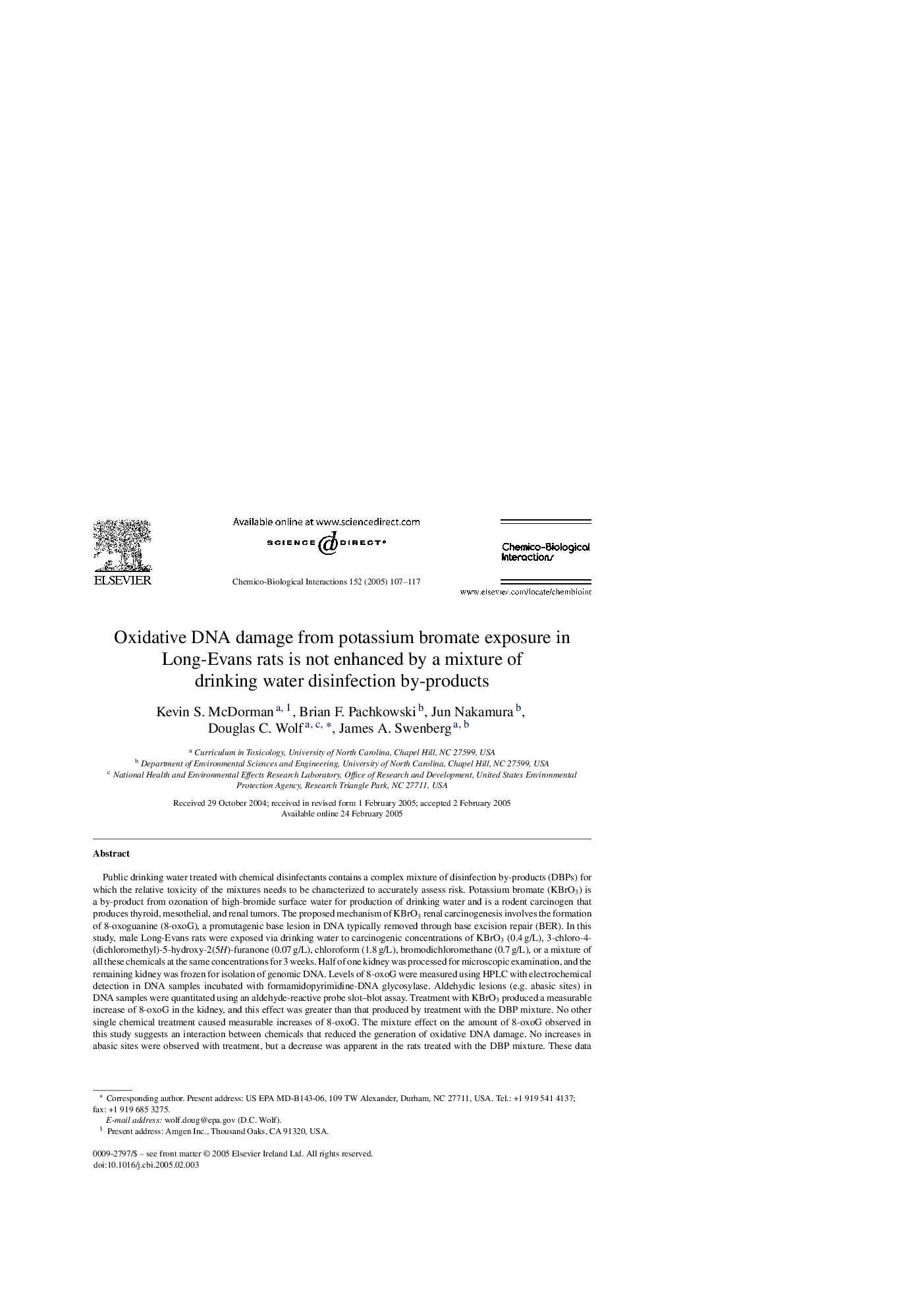| کد مقاله | کد نشریه | سال انتشار | مقاله انگلیسی | نسخه تمام متن |
|---|---|---|---|---|
| 9028701 | 1561663 | 2005 | 11 صفحه PDF | دانلود رایگان |
عنوان انگلیسی مقاله ISI
Oxidative DNA damage from potassium bromate exposure in Long-Evans rats is not enhanced by a mixture of drinking water disinfection by-products
دانلود مقاله + سفارش ترجمه
دانلود مقاله ISI انگلیسی
رایگان برای ایرانیان
کلمات کلیدی
موضوعات مرتبط
علوم زیستی و بیوفناوری
علوم محیط زیست
بهداشت، سم شناسی و جهش زایی
پیش نمایش صفحه اول مقاله

چکیده انگلیسی
Public drinking water treated with chemical disinfectants contains a complex mixture of disinfection by-products (DBPs) for which the relative toxicity of the mixtures needs to be characterized to accurately assess risk. Potassium bromate (KBrO3) is a by-product from ozonation of high-bromide surface water for production of drinking water and is a rodent carcinogen that produces thyroid, mesothelial, and renal tumors. The proposed mechanism of KBrO3 renal carcinogenesis involves the formation of 8-oxoguanine (8-oxoG), a promutagenic base lesion in DNA typically removed through base excision repair (BER). In this study, male Long-Evans rats were exposed via drinking water to carcinogenic concentrations of KBrO3 (0.4Â g/L), 3-chloro-4-(dichloromethyl)-5-hydroxy-2(5H)-furanone (0.07Â g/L), chloroform (1.8Â g/L), bromodichloromethane (0.7Â g/L), or a mixture of all these chemicals at the same concentrations for 3 weeks. Half of one kidney was processed for microscopic examination, and the remaining kidney was frozen for isolation of genomic DNA. Levels of 8-oxoG were measured using HPLC with electrochemical detection in DNA samples incubated with formamidopyrimidine-DNA glycosylase. Aldehydic lesions (e.g. abasic sites) in DNA samples were quantitated using an aldehyde-reactive probe slot-blot assay. Treatment with KBrO3 produced a measurable increase of 8-oxoG in the kidney, and this effect was greater than that produced by treatment with the DBP mixture. No other single chemical treatment caused measurable increases of 8-oxoG. The mixture effect on the amount of 8-oxoG observed in this study suggests an interaction between chemicals that reduced the generation of oxidative DNA damage. No increases in abasic sites were observed with treatment, but a decrease was apparent in the rats treated with the DBP mixture. These data are consistent with previous studies where chronic exposure to this chemical mixture in drinking water resulted in a less than additive carcinogenic response in Tsc2 mutant Long-Evans rats.
ناشر
Database: Elsevier - ScienceDirect (ساینس دایرکت)
Journal: Chemico-Biological Interactions - Volume 152, Issues 2â3, 15 April 2005, Pages 107-117
Journal: Chemico-Biological Interactions - Volume 152, Issues 2â3, 15 April 2005, Pages 107-117
نویسندگان
Kevin S. McDorman, Brian F. Pachkowski, Jun Nakamura, Douglas C. Wolf, James A. Swenberg,